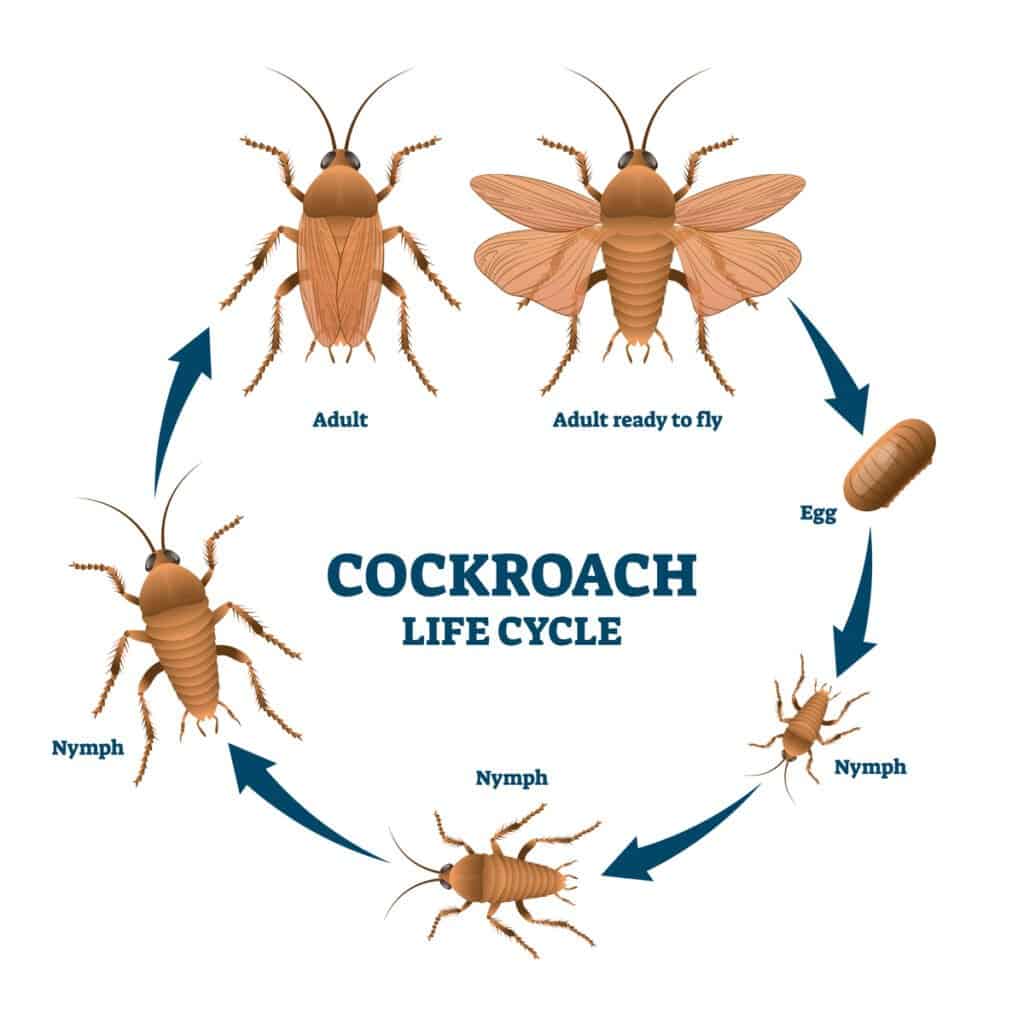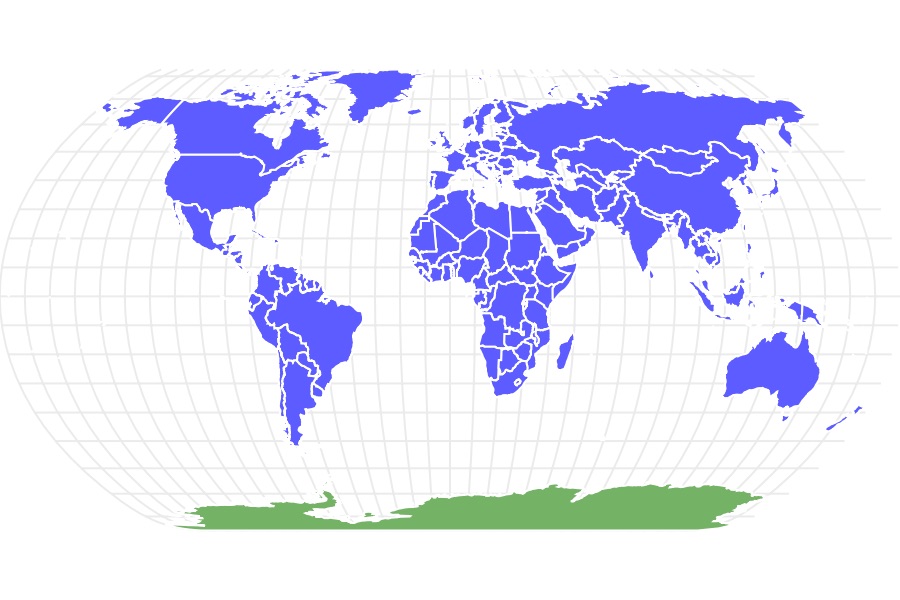German Cockroach
Blattella Germanica
The most common type of urban roach
Advertisement
German Cockroach Facts
- Prey
- Decaying plant and animal matter
- Name Of Young
- Nymph
- Group Behavior
- Colony
- Fun Fact
- The most common type of urban roach
- Biggest Threat
- Extermination by humans
- Most Distinctive Feature
- Light brown color with dark brown bands
- Other Name(s)
- roach, Croton bug
- Gestation Period
- 28 days
- Litter Size
- 30-40 eggs per egg case
- Diet
- Omnivore
- Type
- Insect
- Common Name
- Roach
- Number Of Species
- 1
- Location
- Everywhere humans live
- Group
- Cockroaches
View all of the German Cockroach images!
“German cockroaches are the most common type of pestilential cockroach.”
With over 4,500 species of cockroach, trying to identify a single species may seem overwhelming. But, if you’ve seen a roach running around in your home, there’s a very good chance it’s a german cockroach. These roaches only live in places where humans live, that means they don’t live out in nature, or in Antarctica either. Further, german cockroaches can’t handle the cold; they prefer warmer environments, but can live in colder regions, as long as there’s a house to hide in.
German cockroach infestations are unsightly and dangerous—they carry pathogens and disease wherever they go. But, more than that, they’re stigmatizing. There’s no doubt about it—if you have a German cockroach infestation, you want to get rid of it as fast as possible.
4 Incredible German Cockroach Facts!
- Female german cockroaches carry their egg sacs (oothecae) with them until the nymphs hatch
- German cockroaches have wings, but can’t fly
- Despite the name, they’re thought to have come from Africa or Southeast Asia
- German cockroaches will eat just about anything—including glue and toothpaste
German Cockroach Species, Types, and Scientific Name
The German cockroach, or, Blattella germanica, isn’t actually from Germany. Scientists think this species originated either in Ethiopia, or in Southeast Asia. Wherever they came from, German cockroaches are here to stay. They congregate wherever there are human dwellings (like homes, restaurants, hotels, or apartment buildings), food, and water.
German cockroaches are often confused with Asian cockroaches—they have a very similar appearance. Read on to learn more about how to tell the difference between a German roach and an Asian roach.
Appearance: How to Identify German Cockroaches
German cockroaches are a light brown, almost tan color; they’re not the deep brown-black color of other roaches, like the oriental cockroach. Their bodies are long and thin, with six long legs. Each leg comes equipped with visible spikes they use to climb and scurry. One of their most distinctive features is their antennae; they’re nearly as long as their entire body.
Females have a slightly more rounded body than males, but both males and females have distinct markings on their pronota (the hard shields that cover the backs of their heads). Each adult German cockroach has two dark brown bands on either side of their heads, divided by an amber-colored band.
Younger roaches, known as nymphs, have different coloring. Their dark brown bands extend all the way down their bodies, giving them a two-toned appearance. Also, while nymphs are wingless, adult German cockroaches have body length, non-functional wings.
Life Cycle: How to Identify German Cockroach Eggs
Like all species of roach, German cockroaches start life as eggs. The eggs are concealed inside an egg sac called an ootheca. The mother carries this ootheca around with her, attached to her rear end, until just before the eggs are ready to hatch. At that point, she deposits the ootheca in a safe place, and lets the brand new, translucent white cockroach larvae do the rest.
You may be wondering: how do you tell if a female German cockroach has an egg sac? Well, much like spiders, the female roach carries the egg sac along behind her. But, unlike spiders, it does not look like a ball. Rather, the ootheca looks like a tiny, rectangular, tan-colored purse. Once the nymphs emerge, it looks deflated.

The lifecycle of a cockroach.
©VectorMine/Shutterstock.com
After hatching, baby German cockroaches are known as nymphs. This is the growing stage for the roach; they can reach adulthood in as little as 30 days from hatching. During this time, they shed their exoskeleton several times in a process called molting. Each time they molt, they grow a little bigger and look a little more like an adult. Once they reach adulthood, they won’t molt anymore.
In total, the German cockroach’s lifespan is about nine months. In that time, females can produce 6-8 egg cases, with up to 50 eggs per egg case. With that kind of reproductive potential, it’s easy to see why German cockroaches are one of the number one problem roaches around the world.
Habitat: Where to Find German Cockroaches
German cockroaches can be found anywhere humans are; all they need is a dwelling, a source of food, and a source of water. They’re particularly fond of damp areas near plumbing fixtures or sewage lines. In the home, they can often be found in under-the-sink cabinets, moist basements, storage areas, or food preparation areas.
They might live everywhere humans live, but that doesn’t mean these roaches can live just anywhere. They’re actually dependent on humans to survive; without human dwellings to infest, the German cockroach would surely die. Unfortunately, a symbiotic relationship is impossible; German cockroaches spread disease and leave behind bad smells and stains.
Diet: What do German Cockroaches Eat?
Like most species of roach, German cockroaches are omnivores. They spend most of their time searching for food—and food for a German cockroach means just about anything they can chew. Some of their favorites are leftover human food, pet food, crumbs, and human and animal waste.
German cockroaches may be pests in the home, but, like all roaches, they actually perform a vital task: cleanup. If it weren’t for the cockroaches of the world, decaying plant and animal matter would pile up, and we would all be wading in seas of rotting leaves—and worse.
What Eats the German Cockroach?
German cockroaches aren’t just unwelcome house guests; for many creatures, they’re lunch. In particular, birds feast on them whenever they get the chance. Lizards, small snakes, large frogs, toads, and even salamanders have been known to eat roaches. Rats and mice won’t turn their noses up at a cockroach either. Luckily for the German cockroach, most of these predators won’t find them in the home.
German Cockroach vs. Asian Cockroach
Many people confuse German cockroaches with Asian cockroaches. But, there are a few ways to tell the difference. First, Asian cockroaches are capable of flight, German cockroaches are not. Asian roaches have longer wings than German roaches to facilitate this. Also, Asian cockroaches are generally lighter colored than German cockroaches.
Prevention and Extermination: How to Get Rid of German Cockroaches
If you’re wondering about the best ways to prevent German cockroaches from taking up residence in your home or business, look no further. First, you’ll want to remove all roach attractants, then minimize the places in your home that cockroaches can hide.
If you’ve already got an infestation, your first step may be to determine the severity of the issue. Signs of a German cockroach infestation include roach feces, egg sacs, nymphs, adult roaches, stains, and bad smells. You can either take care of the infestation yourself (using pesticides and roach traps) or call in a professional cockroach exterminator.
View all 170 animals that start with GGerman Cockroach FAQs (Frequently Asked Questions)
What are the differences between a German cockroach and an American cockroach?
The major differences between German and American cockroaches are in their size and appearance. German cockroaches are inferior in size to American cockroaches, and while the former has a light-brown color, the latter has a reddish-brown color.
Thank you for reading! Have some feedback for us? Contact the AZ Animals editorial team.
Sources
- University of Florida Entomology / Accessed February 15, 2022
- Wikipedia / Accessed February 15, 2022


















